On View
Beauty ‘Can Be a Powerful Tool’: Artist Genesis Belanger on How Her Surreal Sculptures Address Our Present Moment
The artist brings her delightfully warped perspective to the New Museum, which hosts her latest show.
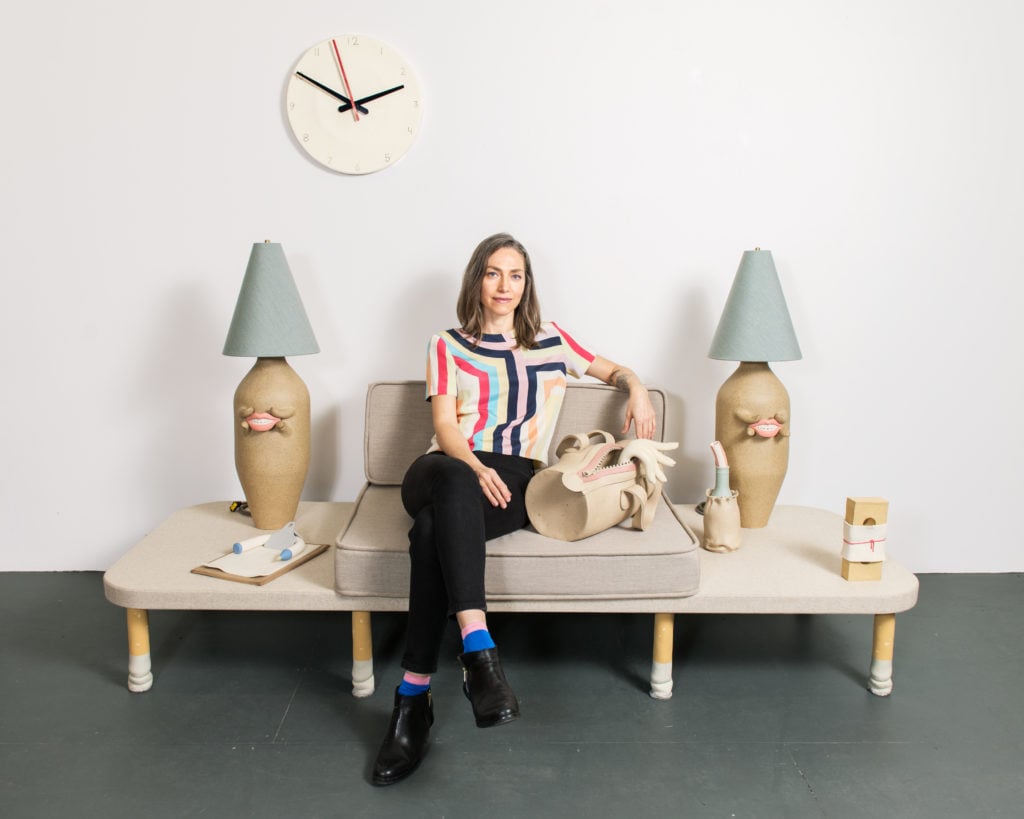
The artist brings her delightfully warped perspective to the New Museum, which hosts her latest show.

Taylor Dafoe

Walk past the storefront window of the New Museum these days and you’ll see what looks like an office from a cartoon nightmare: the desk is propped up on limp cigarettes, the lamps have lips, the tape dispenser is a tongue.
This is the work of Genesis Belanger, a 40-year-old, Brooklyn-based sculptor who transforms mundane, everyday objects into fantastical and unreal stoneware. “Holding Pattern,” the title of her New Museum installation (curated by Margot Norton), evokes a kind of waiting room of the subconscious, and like much of her work, it is at once disconcerting and funny.
“There’s something so American about the symbols she uses—the cheeseburger and the ketchup packets and the soda cans,” Norton says. “It harkens back to pop art—Wesselmann and Lichtenstein. It plays with art history, and very specific American archetypes in art.”
Indeed, references spring to mind easily. With Belanger’s deadpan treatment of absurd juxtapositions, early 20th century Surrealism comes to mind, especially Magritte. Her wry take on domestic life and white-collar work environments puts her in conversation with artists like Martha Rosler. Meanwhile, the human touch behind her elongated forms evokes the work of the New Museum’s most recent retrospective subject, Sarah Lucas.

Works by Genesis Belanger. Photo: Taylor Dafoe.
Yet despite these many cues toward the past, the work feels decidedly of the moment. Belanger taps into the strangeness of our late capitalist landscape, in which it’s not uncommon to hear people describe, say, the latest political scandal or tech innovation as “surreal.” She also dramatizes—sometimes to the point of grotesquery—our cultural fetishization of branding and our over-the-counter coping mechanisms.
“Genesis’s work can, at first glance, look very alluring—in a similar way to many of the objects in storefront windows in the area,” Norton says. “But of course, her objects have a disquieting effect when one takes a closer look. I love that kind of interplay in her work.”
Belanger grew up all around the United States—the daughter of hippies, she jokes—but considers Vermont her home. She took a circuitous route through school, studying at Parsons, RISD, and Cooper Union, before getting her undergraduate degree in fashion design from the Art Institute of Chicago. Not long after, she moved to New York and began working as a prop-maker for high-profile advertising campaigns.
The experience would come to influence her great deal, and after putting in several years in the industry, she went back to school, got her MFA from Hunter College and transitioned to sculpture.
On a cold day in January, artnet News visited Belanger in her two-room Brooklyn studio. Sitting amid the just-finished work for her New Museum installation, she discussed her work ethic, the appeal of the uncanny, and why categories don’t matter.
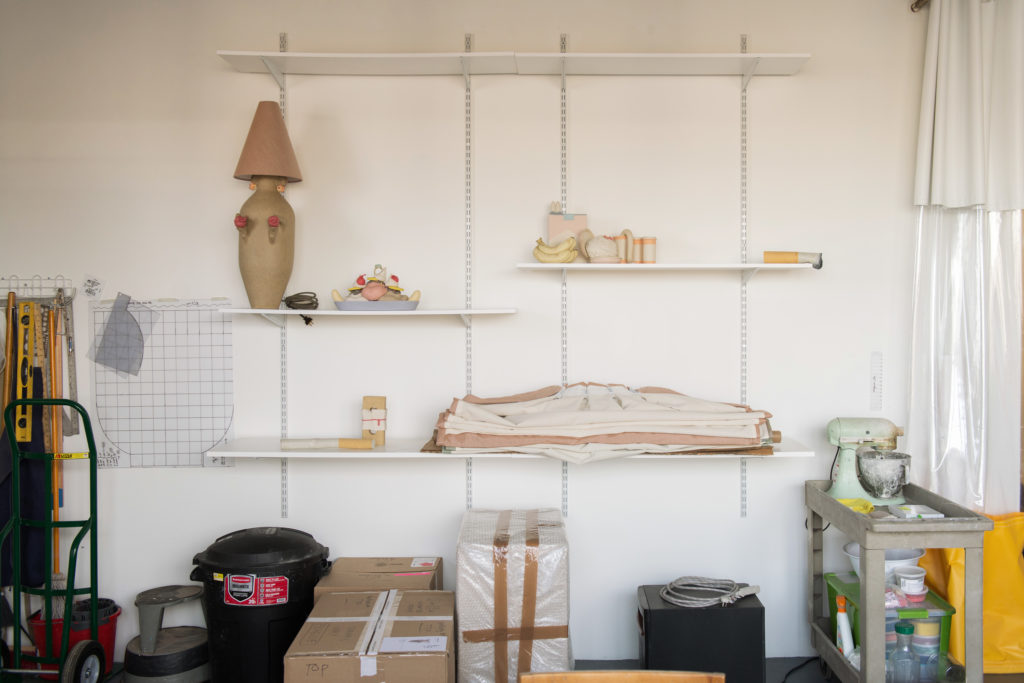
Genesis Belanger’s studio. Photo: Taylor Dafoe.
Growing up, you moved around and traveled a great deal. Looking back, how did those experiences influence your approach to art?
My parents were what we would now call counterculture types, and lived a bit on the drift. We moved yearly for the majority of my life. I didn’t mind all the moving. Looking back, I’ve come to really appreciate those uncomfortable experiences. I work in a medium that has a certain amount of failure, and my work doesn’t always survive the process of creating it. I think the way I grew up taught me not to get too attached.

Sculptures included in Belanger’s exhibition “Holding Pattern” at the New Museum. Photo: Taylor Dafoe.
You worked briefly as a prop-builder for advertising campaigns before getting your MFA. Given the seductiveness of your work, I imagine advertising is a big influence.
It is. Advertising is brilliant people using visual languages to manipulate our desire in the service of capitalism. Moral judgments aside, this is fascinating to me. Beauty is not empty; it can be a powerful tool.
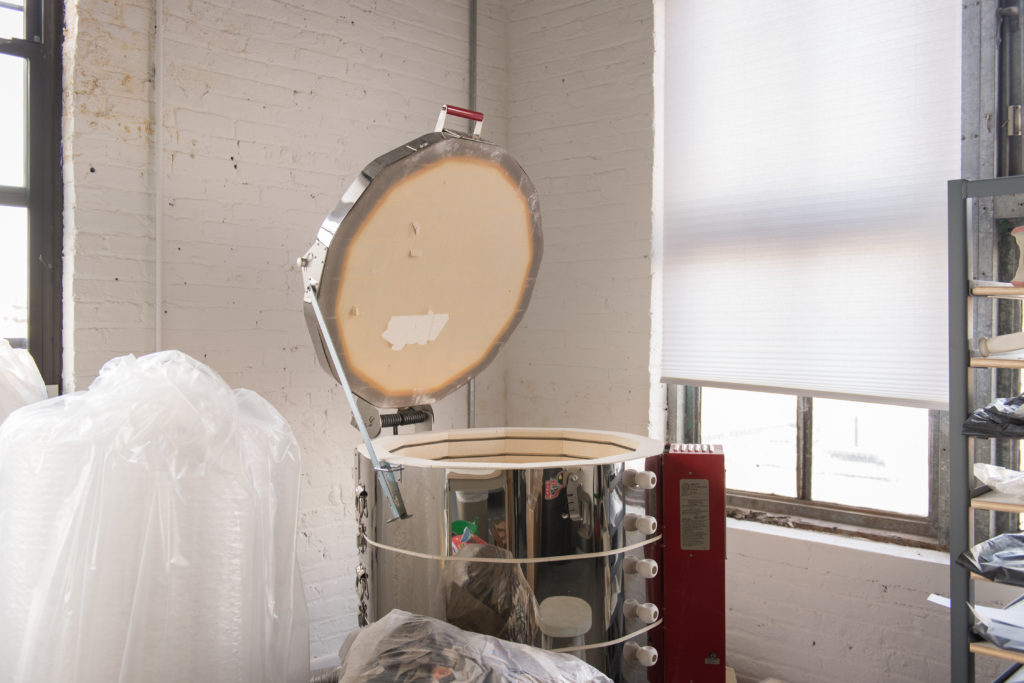
Details from Belanger’s studio. Photo: Taylor Dafoe.
Surrealism has been the subject of renewed interest in recent years, as an art movement and an idea—think about how often people remark that the political climate feels “surreal.” Why do you think that is?
I think this relates directly to the idea of the uncanny, something familiar but strange and uncomfortable, where it should be comfortable. For a moment, it seemed like we were progressing towards our goals of dignity and respect for all. Then, poof! In a cloud of smoke, we are suddenly a country digging in its heels in support of the heteronormative, white, patriarchal, tired, and old status quo.
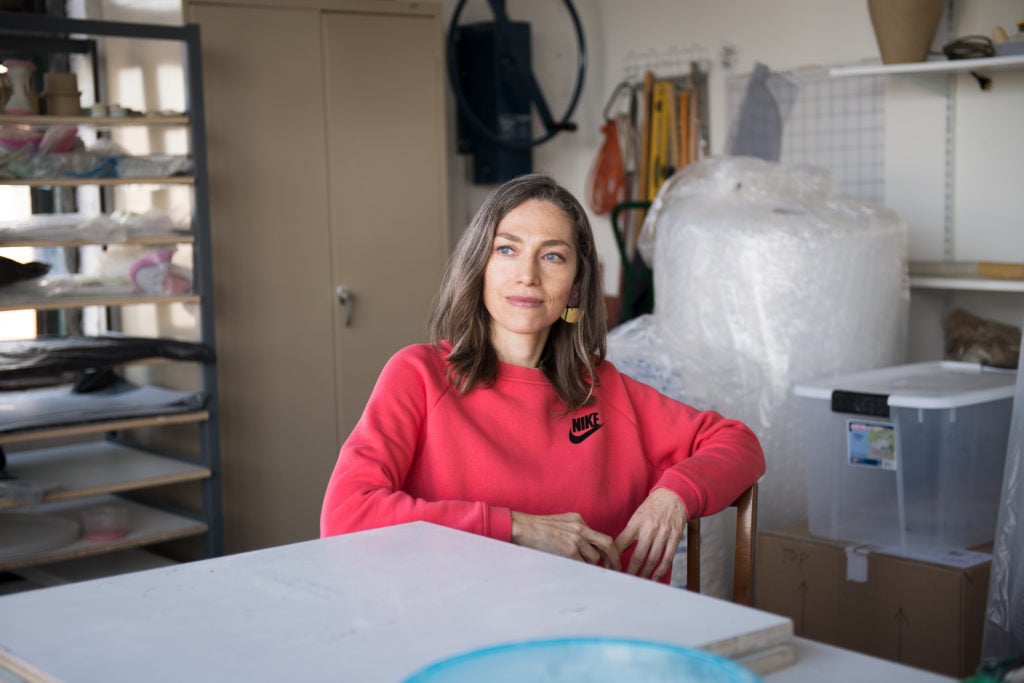
Genesis Belanger in her studio, 2018. Photo: Taylor Dafoe.
The line between design and fine art is becoming increasingly blurry. Do you think this is a good thing? Do you feel your work belongs more in one camp than the other?
I am all for the blurring of categories. Most things actually exist in the nuanced spaces between categories. I am happy to hover on that edge.
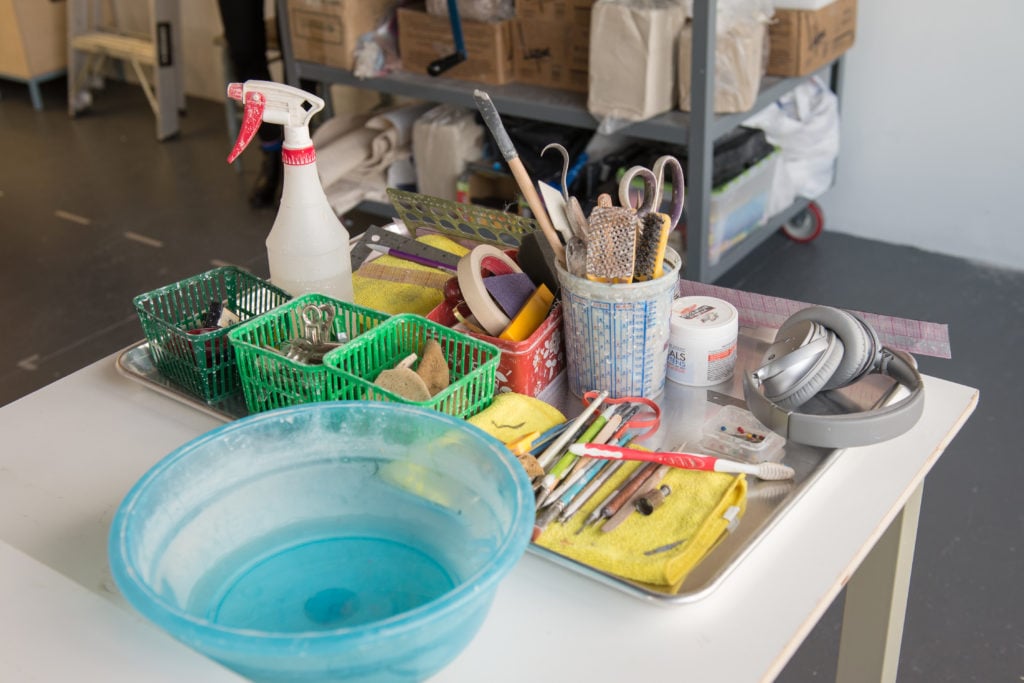
Details from Belanger’s studio. Photo: Taylor Dafoe.
What’s your worst studio habit?
Hmmm, probably not scheduling time to answer anyone’s emails. I am pretty bad about that.
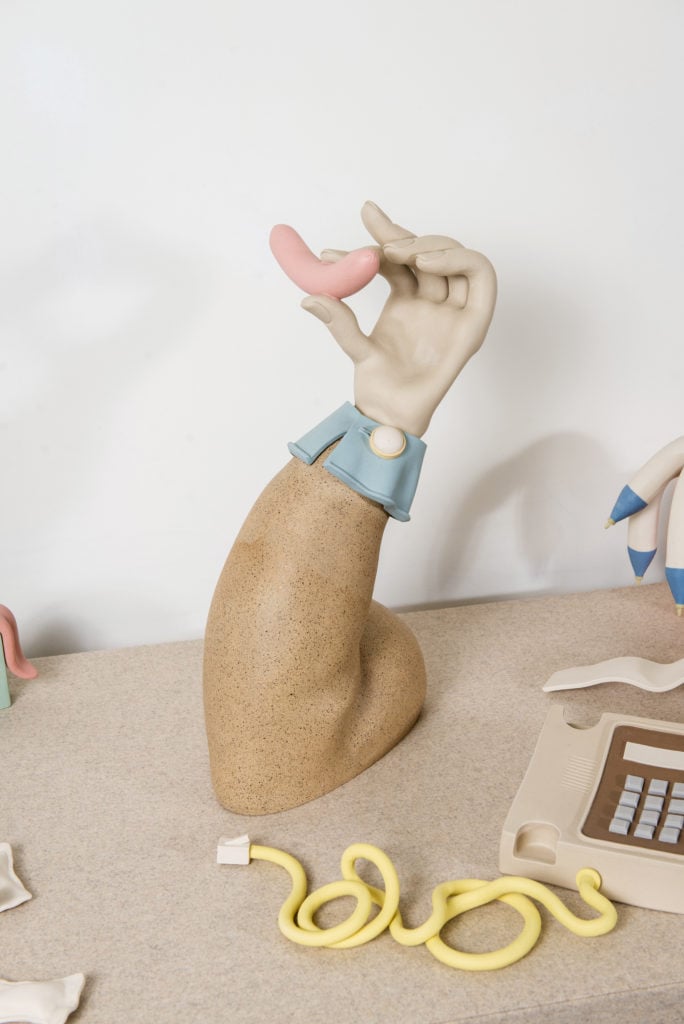
Sculptures included in Belanger’s exhibition “Holding Pattern” at the New Museum. Photo: Taylor Dafoe.
You have a strong work ethic in the studio, keeping business hours and spending at least five days a week here. Why is this schedule important for you?
Art-making is really a practice. If you do push-ups every day, you get fitter and stronger. If you make art every day, you move through ideas and strengthen your craft. I try to stay in good shape!
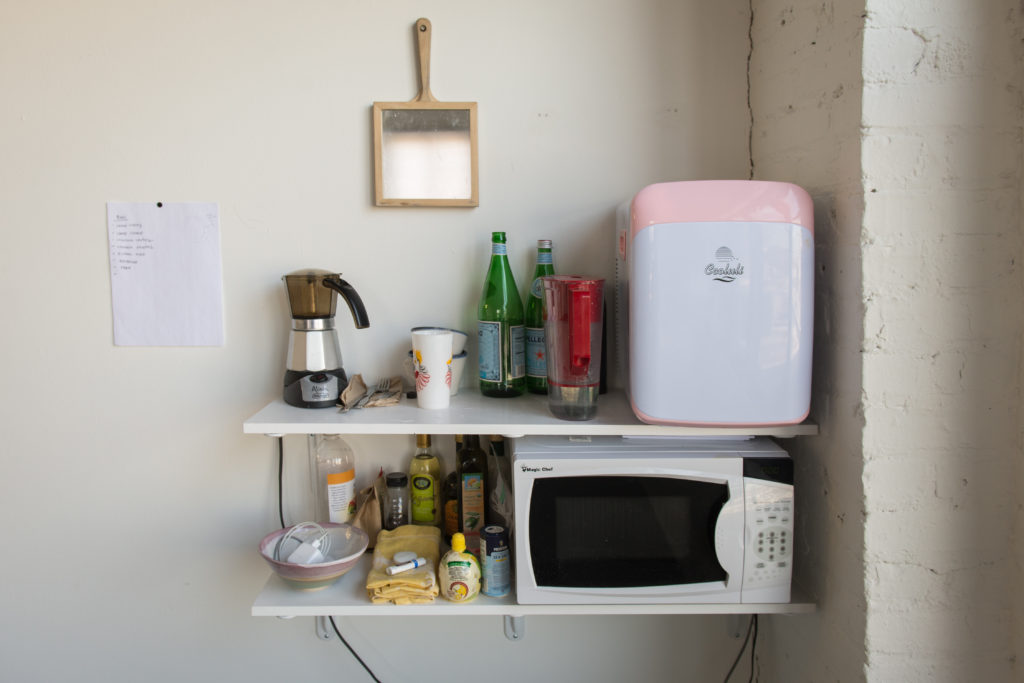
Details from Belanger’s studio. Photo: Taylor Dafoe.
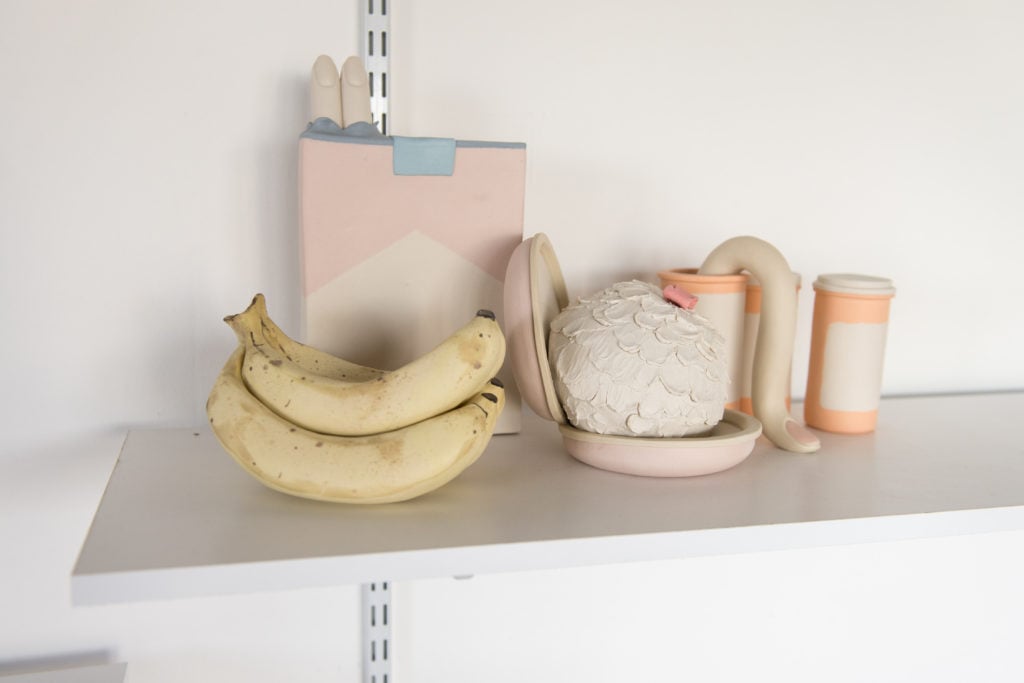
Details from Belanger’s studio. Photo: Taylor Dafoe.
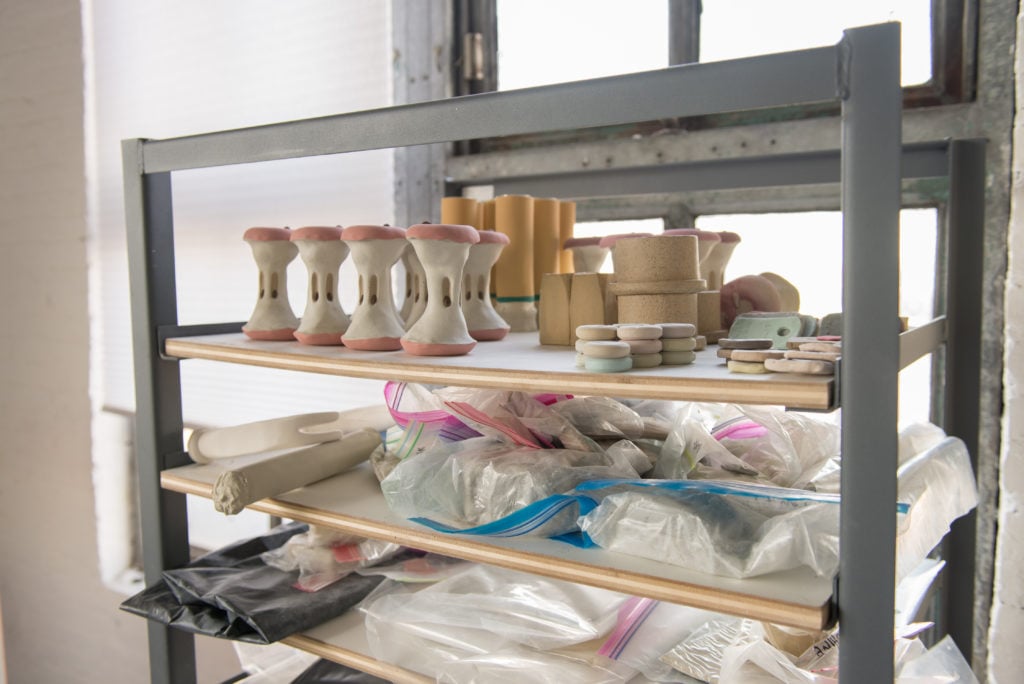
Details from Belanger’s studio. Photo: Taylor Dafoe.
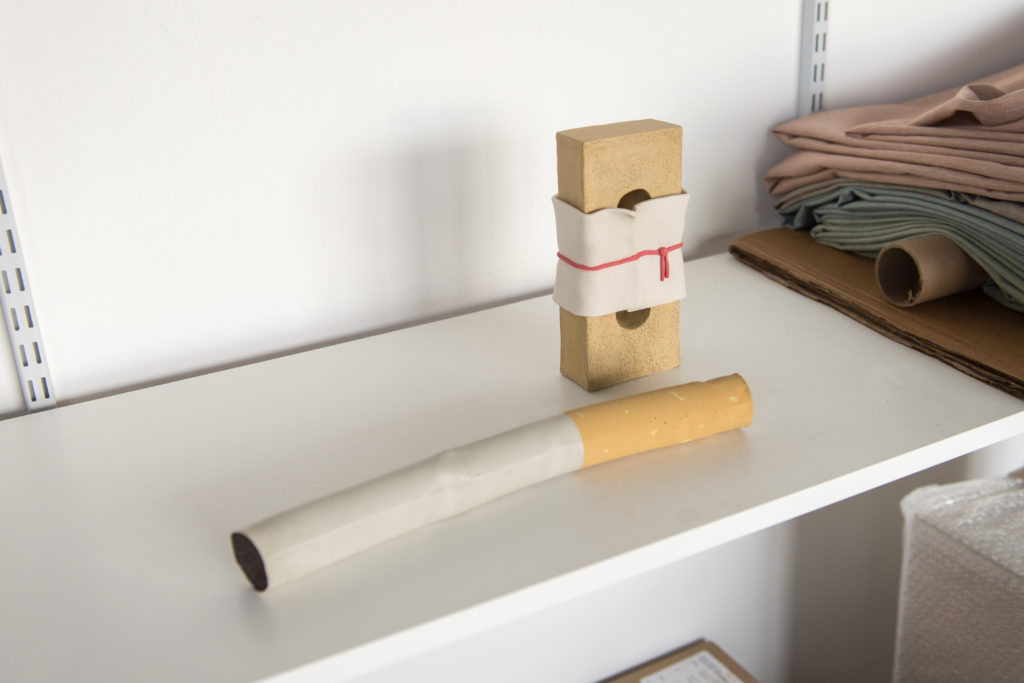
Details from Belanger’s studio. Photo: Taylor Dafoe.
“Genesis Belanger: Holding Pattern” is on view at the New Museum through April 14, 2019.